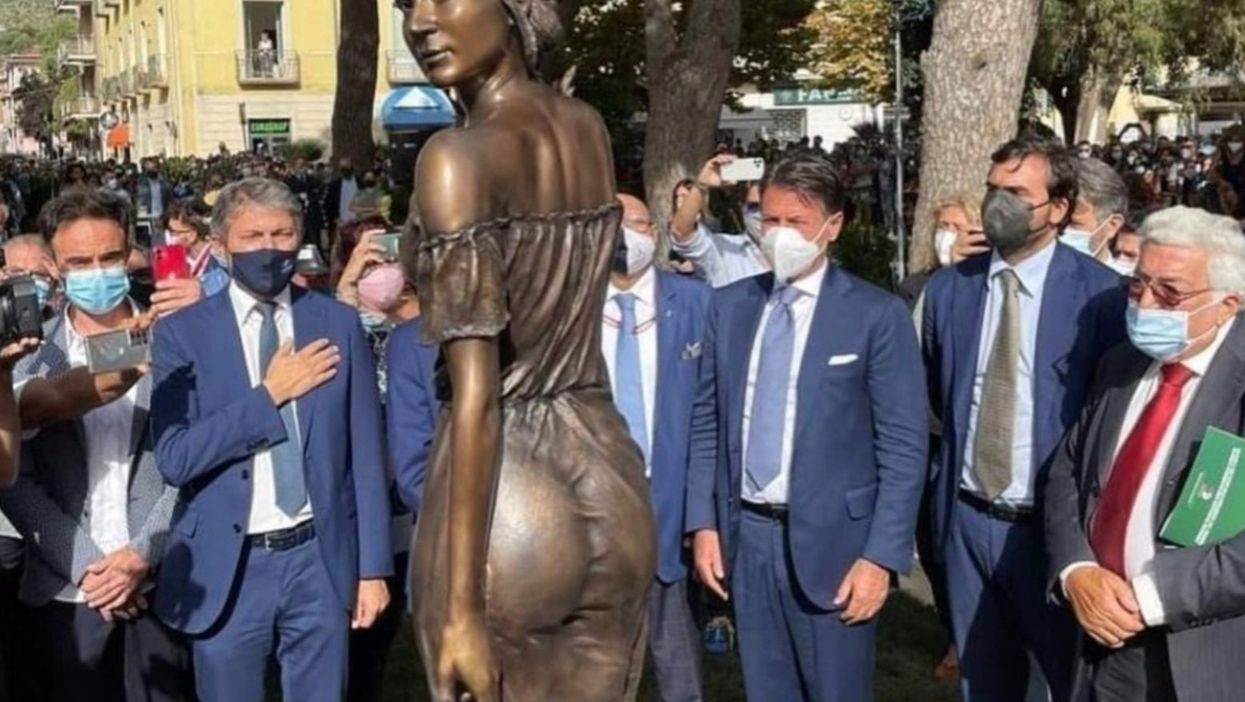A bronze statue of a woman dressed in a transparent dress has prompted a sexism row – after a group of men unveiled it on Saturday in Sapri, Italy.
Sculpted by Emanuele Stifano, the controversial statue pays homage to Luigi Mercantini’s famous poem La spigolatrice di Sapri (The Gleaner of Sapri). The poem explores Italian socialist thinker Carlo Pisacane, who led an expedition against the Kingdom of Naples. The failed expedition took place in 1857 and resulted in 300 people losing their lives.
Despite the intention to commemorate the 19th century poem, the scantily-clad figure has caused a stir online after a group of men unveiled the statue, including the former Italian prime minister, Giuseppe Conte.
Some Italian politicians have branded the figure as sexist and have voiced their concerns online. One even suggested that it should be “knocked down.”
Sign up to our new free Indy100 weekly newsletter
Only in Italy a statue of an agrarian laborer, in memory of a massacre of 300 ppl, could take this form. 2021 in… https://t.co/N1XFeueAcS— Francesca Piazzoni (@Francesca Piazzoni) 1632687913
Laura Boldrini, a member of the Democratic Party, took to Twitter to express her dismay. She called it an “offence to women and to the history it should celebrate.”
“But how can even institutions accept the representation of women as a sexualised body? Male chauvinism is one of the evils of Italy”, she added.
La statua appena inaugurata a #Sapri e dedicata alla #Spigolatrice è un’offesa alle donne e alla storia che dovrebb… https://t.co/M4CWKl91ig— Laura Boldrini (@Laura Boldrini) 1632690769
A group of female politicians from the Democratic Party’s in Palermo called for the statue to be removed.
In a statement, they said: “Once again, we have to suffer the humiliation of seeing ourselves represented in the form of a sexualised body, devoid of soul and without any connection with the social and political issues of the story.”
Monica Cirinnà, a member of the Senate, added: “A slap to history and to women who are still only sexualised bodies. This statue of the Gleaner says nothing of the self-determination of the one who chose not to go to work to take sides against the Bourbon oppressor.”
A #Sapri uno schiaffo alla storia e alle donne che ancora sono solo corpi sessualizzati Questa statua della Spigola… https://t.co/71BdNktmJC— Monica Cirinnà (@Monica Cirinnà) 1632683345
The sculptor took to Facebook on Monday to defend his work. He suggested that he “took advantage of the sea breeze” to “highlight the body”.
“This is to underline an anatomy that should not have been a faithful snapshot of a 19th century peasant woman, but rather to represent an ideal of a woman, evoke her pride, the awakening of a conscience, all in a moment of great pathos”, he wrote.














